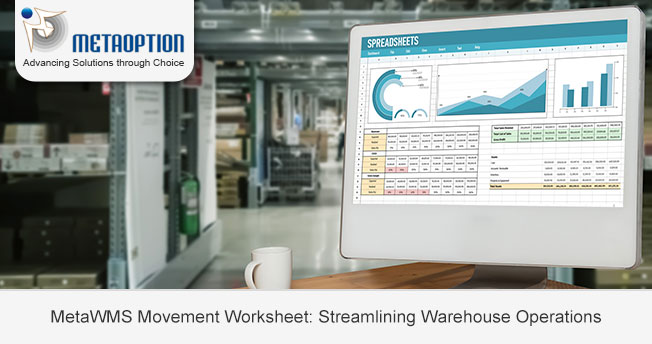MetaWMS, a robust Warehouse Management System (WMS) integrated with Microsoft Dynamics 365 Business Central, offers many tools to optimize warehouse efficiency and accuracy. One such powerful feature is the Movement Worksheet. In this blog, we’ll explore the Movement Worksheet, its functionalities, benefits, and how it contributes to overall warehouse optimization.

Understanding Movement Worksheet
A Movement Worksheet in MetaWMS is a crucial document that outlines planned inventory movements within a warehouse. It serves as a blueprint for tasks like:
- Replenishment: Moving inventory from surplus bins to bins with higher demand.
- Stock Transfers: Shifting inventory between different storage locations.
- Cross-Docking: Directly transferring goods from incoming to outgoing shipments without storage.
By creating a structured plan for these movements, businesses can minimize errors, optimize labor utilization, and enhance overall warehouse productivity.
Key Benefits of Movement Worksheet
- Improved Inventory Accuracy: By defining clear movement paths, the Movement Worksheet helps prevent misplaced or lost items, leading to accurate inventory records.
- Enhanced Efficiency: Streamlined movement processes reduce idle time and optimize labor allocation, resulting in increased productivity.
- Optimized Storage Space: Intelligent replenishment strategies based on the Movement Worksheet ensure optimal utilization of storage space.
- Better Order Fulfillment: Accurate inventory positioning and efficient movement facilitate faster order picking and shipping.
- Reduced Errors: Clear instructions and predefined movement paths minimize human errors, leading to fewer discrepancies.
How Movement Worksheet Works
The Movement Worksheet typically involves the following steps:
- Identification of Movement Needs: The system analyzes inventory levels, demand patterns, and storage capacity to determine necessary movements.
- Worksheet Creation: Based on identified needs, the Movement Worksheet is generated, outlining items to be moved, source and destination locations, and quantities.
- Worksheet Distribution: The worksheet is assigned to warehouse personnel responsible for executing the movements.
- Movement Execution: Warehouse workers follow the worksheet instructions to move inventory physically.
- Worksheet Completion: Upon completion, the worksheet is updated to reflect the executed movements.
Integration with MetaWMS
MetaWMS seamlessly integrates with the Movement Worksheet feature, offering additional advantages:
- Real-time Inventory Updates: The system accurately reflects inventory changes as movements are executed.
- Barcode Scanning: Integration with barcode scanners ensures precise item identification and movement tracking.
- Mobile Device Support: Warehouse workers can access and update worksheets through mobile devices for increased flexibility.
- Reporting and Analytics: Detailed reports provide insights into movement performance, helping identify areas for improvement.
Conclusion
The Movement Worksheet, when effectively utilized in conjunction with advanced warehouse solution, can significantly enhance warehouse operations. By optimizing inventory placement, streamlining movement processes, and minimizing errors, businesses can achieve greater efficiency, accuracy, and overall profitability.
Would you like to delve deeper into a specific aspect of the Movement Worksheet or explore other MetaWMS features?
For more information and a tailored demonstration contact us today at MetaOption.


